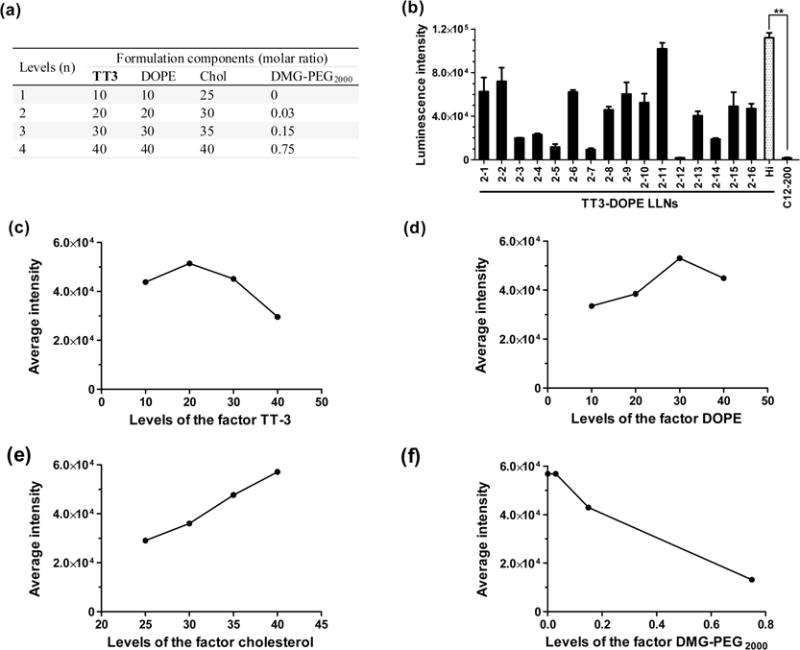Figure 4.

A second round of orthogonal experimental design and analysis. (a) Four levels for each formulation component: TT3, DOPE, cholesterol, and DMG-PEG2000. (b) Sixteen combinations (2–1 to 2–16) were evaluated with Hep3B cells or their relative luminescence intensity through the second orthogonal array. The most efficient formulation was validated with a designated code of Hi-TT3 LLNs (formulation ratio is TT3/DOPE/Chol/DMG-PEG2000 = 20/30/40/0). (triplicate; **, P < 0.01; t test, double-tailed). (c–f) The impact trend of TT3 (c), DOPE (d), cholesterol (e), and DMG-PEG2000 (f) on delivery efficiency.
